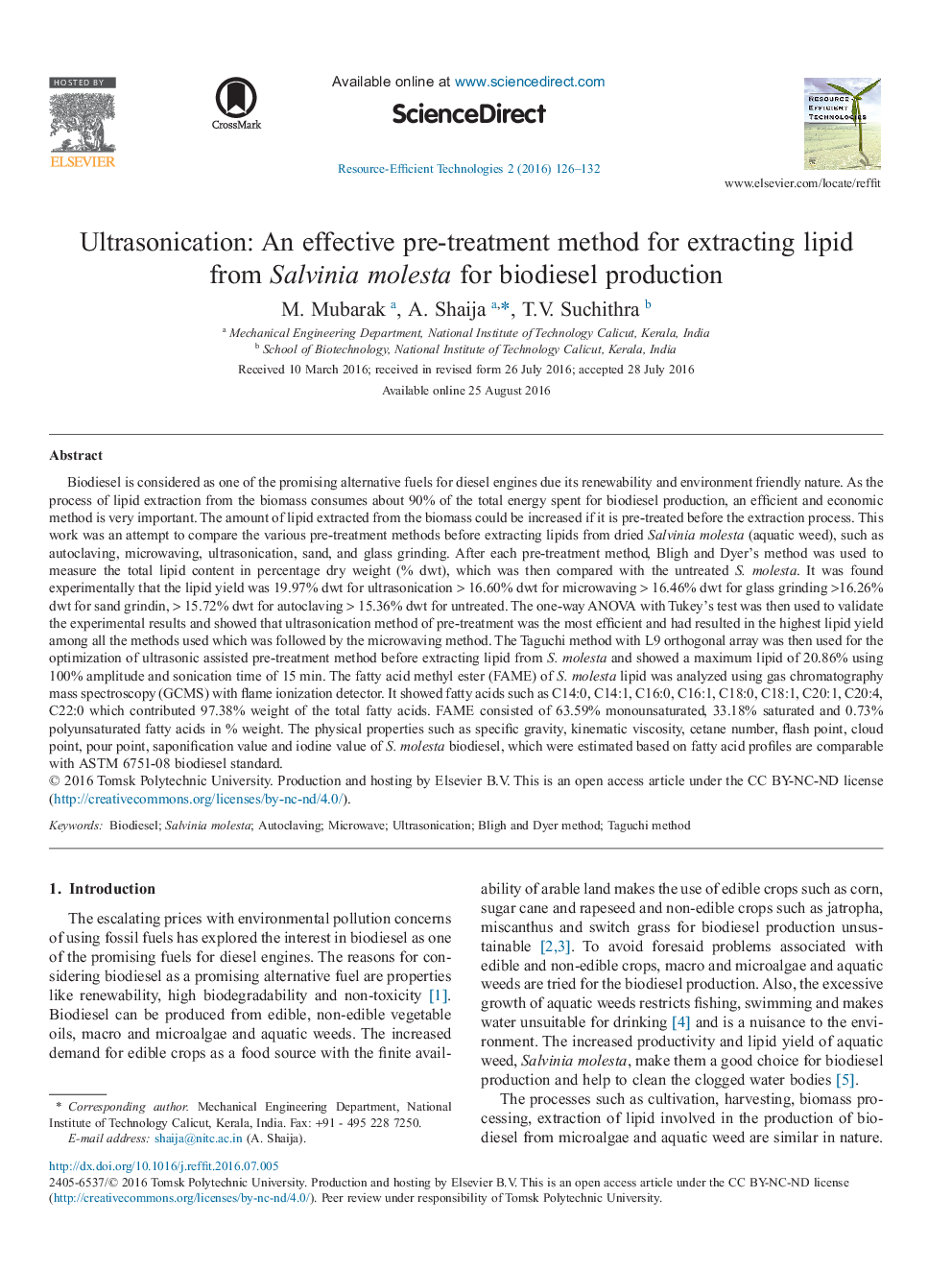| کد مقاله | کد نشریه | سال انتشار | مقاله انگلیسی | نسخه تمام متن |
|---|---|---|---|---|
| 4428251 | 1412488 | 2016 | 7 صفحه PDF | دانلود رایگان |

Biodiesel is considered as one of the promising alternative fuels for diesel engines due its renewability and environment friendly nature. As the process of lipid extraction from the biomass consumes about 90% of the total energy spent for biodiesel production, an efficient and economic method is very important. The amount of lipid extracted from the biomass could be increased if it is pre-treated before the extraction process. This work was an attempt to compare the various pre-treatment methods before extracting lipids from dried Salvinia molesta (aquatic weed), such as autoclaving, microwaving, ultrasonication, sand, and glass grinding. After each pre-treatment method, Bligh and Dyer's method was used to measure the total lipid content in percentage dry weight (% dwt), which was then compared with the untreated S. molesta. It was found experimentally that the lipid yield was 19.97% dwt for ultrasonication > 16.60% dwt for microwaving > 16.46% dwt for glass grinding >16.26% dwt for sand grindin, > 15.72% dwt for autoclaving > 15.36% dwt for untreated. The one-way ANOVA with Tukey's test was then used to validate the experimental results and showed that ultrasonication method of pre-treatment was the most efficient and had resulted in the highest lipid yield among all the methods used which was followed by the microwaving method. The Taguchi method with L9 orthogonal array was then used for the optimization of ultrasonic assisted pre-treatment method before extracting lipid from S. molesta and showed a maximum lipid of 20.86% using 100% amplitude and sonication time of 15 min. The fatty acid methyl ester (FAME) of S. molesta lipid was analyzed using gas chromatography mass spectroscopy (GCMS) with flame ionization detector. It showed fatty acids such as C14:0, C14:1, C16:0, C16:1, C18:0, C18:1, C20:1, C20:4, C22:0 which contributed 97.38% weight of the total fatty acids. FAME consisted of 63.59% monounsaturated, 33.18% saturated and 0.73% polyunsaturated fatty acids in % weight. The physical properties such as specific gravity, kinematic viscosity, cetane number, flash point, cloud point, pour point, saponification value and iodine value of S. molesta biodiesel, which were estimated based on fatty acid profiles are comparable with ASTM 6751-08 biodiesel standard.
Journal: Resource-Efficient Technologies - Volume 2, Issue 3, September 2016, Pages 126–132